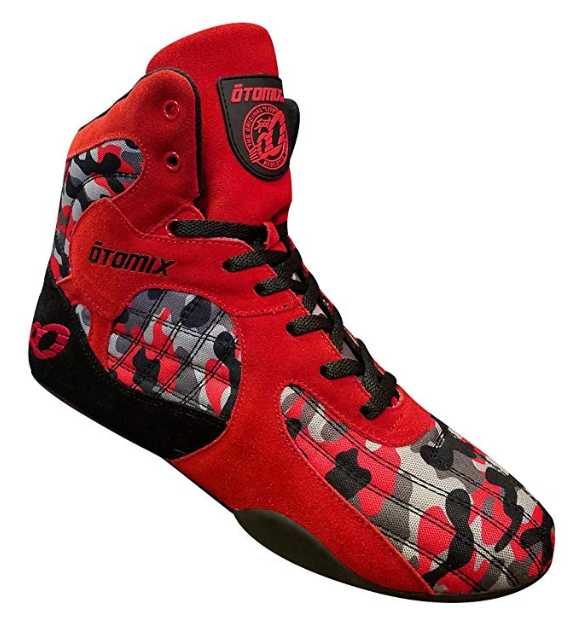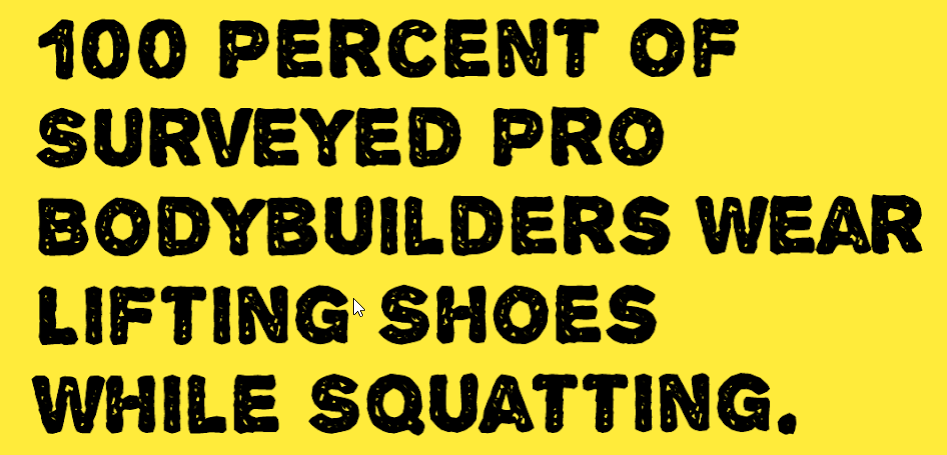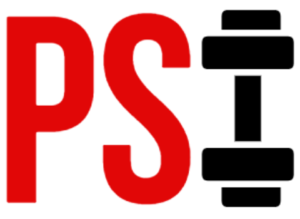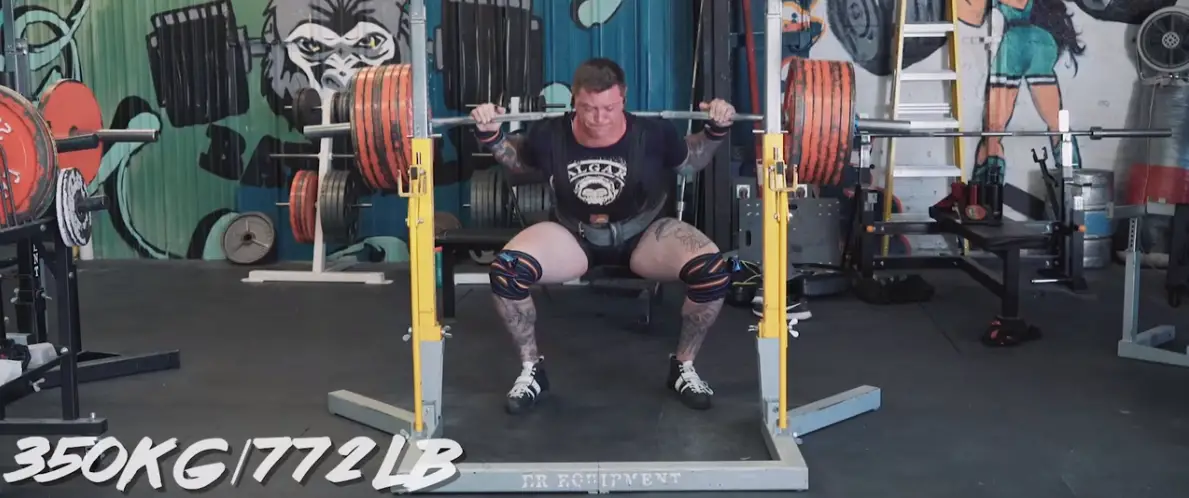There’s an age-old debate among coaches and lifters regarding training footwear (or lack thereof) and what the best option is for squatting.
Some people swear by barefoot squatting, saying that it’s the most natural way to do it, while others say it’s bad for your feet (well, evidence?).
Some people prefer to squat in lifting shoes, and of course, there are those who call them idiots for doing so.
Everywhere you look, someone is trying to shove their opinion down your throat. And you, as someone looking for a straightforward answer to a pretty simple question, are left wondering:
“What the hell is wrong with everyone and can we have a civilized discussion on the matter?”
Today, that’s exactly what we are going to do. We’ll take a look at the question from all angles, and you’ll have a clear answer by the end.
Oh, and one more thing before we begin. In case anyone feels like I’m biased toward footwear or barefoot training, let me dispel your doubts right away:
I have a pair of Olympic shoes, one with a flat sole (gotta love my Chucks) and I’ve also spent many hours under the barbell barefoot. I’ve tried it all, and I have never stuck to one particular option for a long period.
With that out of the way, let’s dig into the topic.
Lifting Shoes: What are They Used For?
Lifting shoes (commonly called Olympic and weightlifting shoes) are a special kind of footwear that is specifically designed for lifting weights. Lifting shoes are distinguishable by their raised heel and have been quite popular in the sport of Olympic weightlifting for a while now.
Athletes in that sport first started experimenting with these shoes back in the early 1950s. The lifting shoes have since become incredibly popular among all lifters.
When you first put on a pair of these shoes and go for a set of squats, you’ll notice that hitting proper depth while maintaining good form and an upright chest is much easier compared to a flat-soled shoe or squatting barefoot.
This is all thanks to the design of the lifting shoes. They have a hard, non-compressive sole and the heel is raised, which allows your knees to travel further forward ahead of your toes, and somewhat masking any ankle immobility you might have.
Thanks to that, you can hit a pretty respectable depth on your squat, even if your mobility isn’t the best.
Now back to the Olympic weightlifters:
The Olympic shoe is a staple piece of equipment for any respectable weightlifter because the mobility requirements there are immense. You need to squat ass-to-grass while maintaining the rigidity of your torso and the lifting shoe helps a lot.
In movements like the front squat, high-bar back squat, and overhead squat, a weightlifter must squat very low while keeping the barbell over their center of gravity and not slouching forward.
Thanks to the contribution of the lifting shoe, they perform the movement more efficiently, maintain their balance well, and can lift heavier weights. And heavier weights win medals.
Why do Non-Weightlifters Wear Weightlifting Shoes?
A good chunk of people have poor ankle mobility, and when they try to squat barefoot or with a flat-soled shoe, their chest travels forward, or they are unable to hit even parallel level depth before their lower back begins to round.
But with the Olympic, these same people can work around that immobility and squat with good form to a respectable depth safely.
What does that mean for you?
A weightlifting shoe is an excellent tool you can use to work around ankle stiffness and still make great leg gains. BUT, that doesn’t mean that ankle mobility should be overlooked. You should still work on improving your barefoot squat depth.
Some lifters also prefer weightlifting shoes because they provide amazing rigidity and make them feel more stable. That, while being more of a mental benefit, is immensely important when you go for heavy weight. You need a stable base to push off of and having the confidence can help a lot.
To check out the below Otomix Weightlifting shoe on Amazon, click this link.

Barefoot Training: Advantages and Disadvantages
Now that we’ve covered the lifting shoe, let’s look at the advantages and disadvantages of barefoot squatting:
Benefits of Training Barefoot:
- You are honest with yourself
Because there isn’t the advantage of the raised heel, you are forced to work on your mobility much more diligently. If you’re unable to hit proper depth with good form, you know that you need to do something about it. With the lifting shoe, many people try to mask their deficiencies for years. - It’s more convenient
You might get a few weird looks at the gym, sure. But who cares? Squatting barefoot is quite convenient because all you need to do is take off your shoes and you’re ready.
Now, if you squat in lifting shoes, but also deadlift on the same day, you would have to carry two pairs of shoes and switch between them during your workout. - You don’t have to spend a bunch of money on a good lifting shoe
This is pretty self-explanatory, but a pair of decent lifting shoes can set you back $200-300. - It improves your balance
Squatting barefoot for the first time is a weird experience, especially if you try to lift 80-90% of what you normally squat with shoes on. With that said, the adjustment period passes quickly, and it allows you to improve your balance much quicker. - It allows you to learn the ‘push off the heel’ cue quicker
One of the most difficult things you need to master for a proper squat is to keep the weight on your heels and push off of them. Many beginners and some intermediate lifters tend to let the barbell travel forward with the weight coming up on their toes, rather than heels.
At the bottom position, you need to keep the heel flat on the floor and push off of it, rather than allow it to raise up off the floor (which can be quite dangerous with a heavy barbell on your back).Squatting barefoot allows you to make the mind-muscle connection faster and learn the crucial cue.
Drawbacks to Training Barefoot:
Of course, there are some drawbacks which we need to cover.
- Some gyms have strict ‘shoes on’ policy
This isn’t that common, but some gyms don’t allow lifting in socks or deadlift slippers, and you need to get familiar with the rules. - It can be slippery, be careful
Certain surfaces can’t get good traction with socks or bare feet, and you need to be very careful. This is especially important if your feet tend to sweat a lot, which makes things even worse.
Of course, practice common sense and test out the traction with light weights before ever attempting to squat anything heavy. - It can be weird, even a bit painful at first
As the last thing worth noting, realize that squatting barefoot for the first time is going to feel weird and your balance might not be the best. If your feet are particularly sensitive, you might even feel a bit of discomfort.
As with most things, stick to it for a few workouts, and you’ll get used to it. Just like placing a heavy barbell on your back hurts at first, but you stop noticing it after three or four leg days.
To check out the below Adidas Adipower Weightlifting shoe on Amazon, click this link!

What about Squatting in Flat Soled Shoes?
Earlier in this post, I mentioned that I have a pair of flat-soled shoes. The truth is, I use them for the majority of my squat work, especially when doing low-bar back squats. On that variation, I find that I don’t need any help from the heel to reach proper depth.
Now, I’m a firm believer that every lifter out there should work on improving their squat depth while training barefoot or with flat-soled shoes. Masking a weakness is just that, masking. And sooner or later, you’ll have to improve it.
Plus, a decent squat shoe with a flat, non-compressive sole will cost you $50 or so, where a decent pair of Olympic shoes goes in the hundreds.
If you’re not sure that you’re dedicated enough, or you simply don’t squat more than once per week, going for a flat-soled shoe would probably be better for you.
Flat-soled shoes are also a good alternative to barefoot squatting because they deliver almost all of the same benefits, but can be used in any gym (the case if the squatting surface in your gym is slippery or your gym doesn’t allow barefoot training).

Do Pro Bodybuilders Wear Weightlifting Shoes?
I did some field research and found that 100% of the IFBB Pro bodybuilders I investigated, wear weightlifting shoes while squatting. I looked into some big names such as Breon Ansley, Jay Cutler, and Phil Heath and found that they all squat in weightlifting shoes. I also looked into some lesser known IFBB Pro bodybuilders such as Mika Sivonen and Greg Doucette and found that they wear weight lifting shoes too. I’m sure there are pros out there that squat barefoot but it seems that most pros squat in designated weightlifting shoes.
Squatting Barefoot vs. Lifting Shoes: Is There a Winner?
Okay, let’s recap what we’ve learned so far:
- Lifting shoes are sturdy and very durable. They provide the lifter with a solid base for squatting and can help those with limited ankle mobility to reach respectable depth. They can also give you the small mental edge you need to crush PRs.
- Thanks to the assistance with ankle mobility, lifting shoes can also help you maintain great form as you squat and avoid injuries.
- Movements like the high-bar and front squat benefit much more from a lifting shoe than a low-bar back squat does.
- Barefoot training provides many benefits such as knowing full-well just how mobile you are, it’s cheap, it’s convenient, it improves your balance, and it’s a great way for beginners to learn how to push off of the heel effectively.
- Of course, there are a few drawbacks to barefoot training, but all of them can be sidestepped with a bit of thinking and common sense.
- Shoes with a flat, non-compressive sole are a cheap alternative to lifting shoes and can be used as a substitute for barefoot training, as they deliver almost all of the benefits.
With that said, my advice to you is:
Try barefoot training and see how it feels for you. But stick with it for at least a few weeks. If you find that it feels great, stick with it. If not, go back to your regular flat-soled shoes.
If you’re wondering whether you should invest in a pair of good lifting shoes, consider these:
- Is your ankle mobility limiting you from reaching proper depth or can you squat just fine barefoot?
- Are you serious about your training? A pair of good lifting shoes is around $200, and it would be a waste if you use them once a month.
- Do you squat often and are you training for serious strength, or are you just a recreational lifter who squats once a week?
- Are you interested in Olympic weightlifting? If so, then a pair of lifting shoes is an invaluable investment in your career.
It comes down to your personal preference, situation, and mobility. I know some of you are looking for a clear-cut answer, but there isn’t one.
If you can, borrow a pair of lifting shoes from a friend, use them for a few sessions and decide for yourself. Is the benefit worth the price tag?
Follow me / Pump Some Iron on Instagram for updates @pump.some.iron

